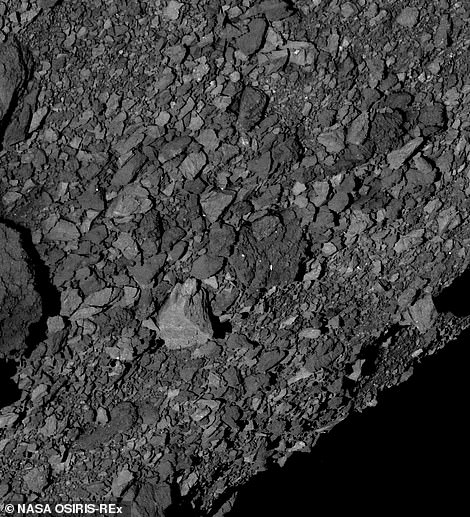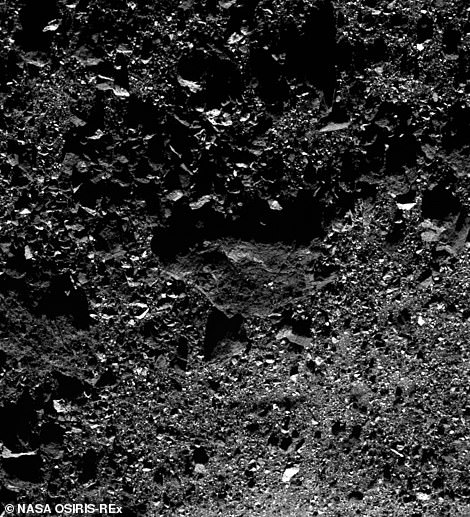
NASA is just three months into its close-up investigation of the near-Earth asteroid, Bennu. But already, the discoveries are piling in.
Scientists say the OSIRIS-Rex spacecraft has observed particle plumes erupting from Bennu’s surface in an unexpected find. OSIRIS-REx’s observations also appear to confirm the presence of hydrated minerals all over the ancient object. It’s thought that an asteroid like this could have delivered carbon-rich material to Earth long ago
The early observations also suggest the object, which is suspected to contain unaltered material from the birth of our solar system, may be even older than initially thought.
Features at the surface now suggest it could be 100 million to one billion years old, and likely originated in the main Asteroid Belt.

Much of the research centers on a series of unexpected surface features spotted over the first few months. None, however, appear more exciting than the discovery of particle plumes. The illustration above maps the projection of plumes erupting from Bennu .

While its features could help improve our understanding of the early solar system, they’ll also pose challenges to the mission as scientists hope to dig deeper.

The team also says they found more boulders at the surface than expected. This means the planned Touch-and-Go (TAG) portion of the mission will need to be adjusted. While it previously planned for an 82-foot-wide sample site, researchers now say they’ll have to target a smaller area.
While its features could help improve our understanding of the early solar system, they’ll also pose challenges to the mission as scientists hope to dig deeper.
‘Bennu has issued us a challenge to deal with its rugged terrain, and we are confident that OSIRIS-Rex is up to the task,’ says Rich Burns, the project manager of OSIRIS-REx at NASA’s Goddard Space Flight Center in Greenbelt, Maryland.
NASA is hoping its spacecraft will return a sample to Earth in 2023.





Commentaires